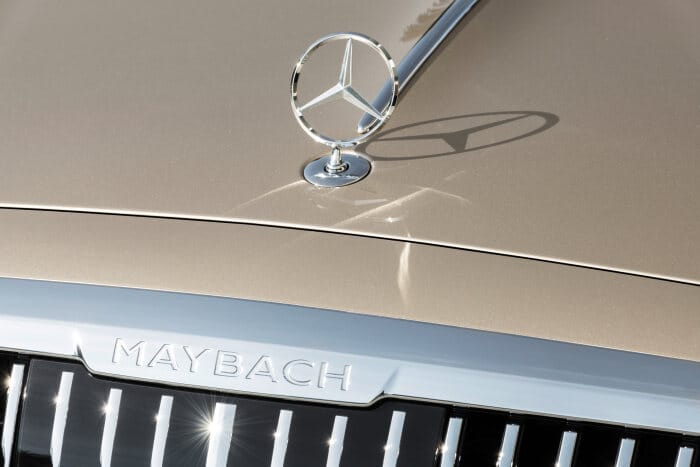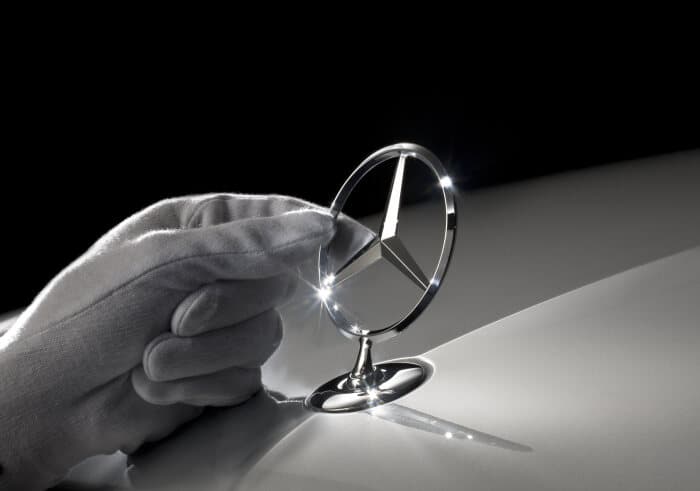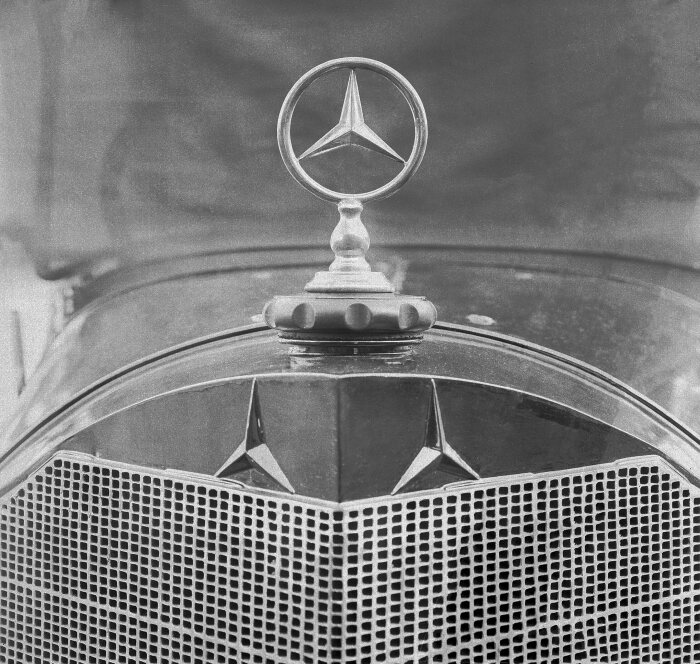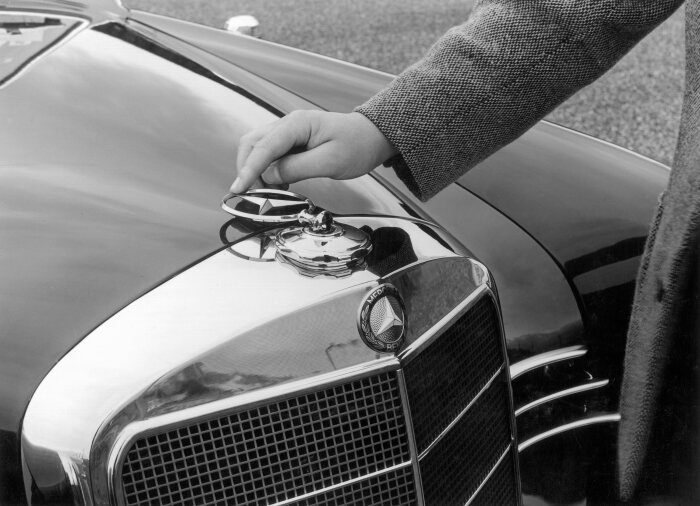160 vehicles and a total of 1,500 exhibits are presented in the varied permanent exhibition of the Mercedes-Benz Museum. The “33 Extras” are a particular highlight: they can bring the history of personal mobility and motoring culture to life using details that are often surprising. The Mercedes-Benz Museum Inside newsletter series draws attention to the “33 Extras” and focuses on their background stories. Today’s issue is all about the radiator emblem.
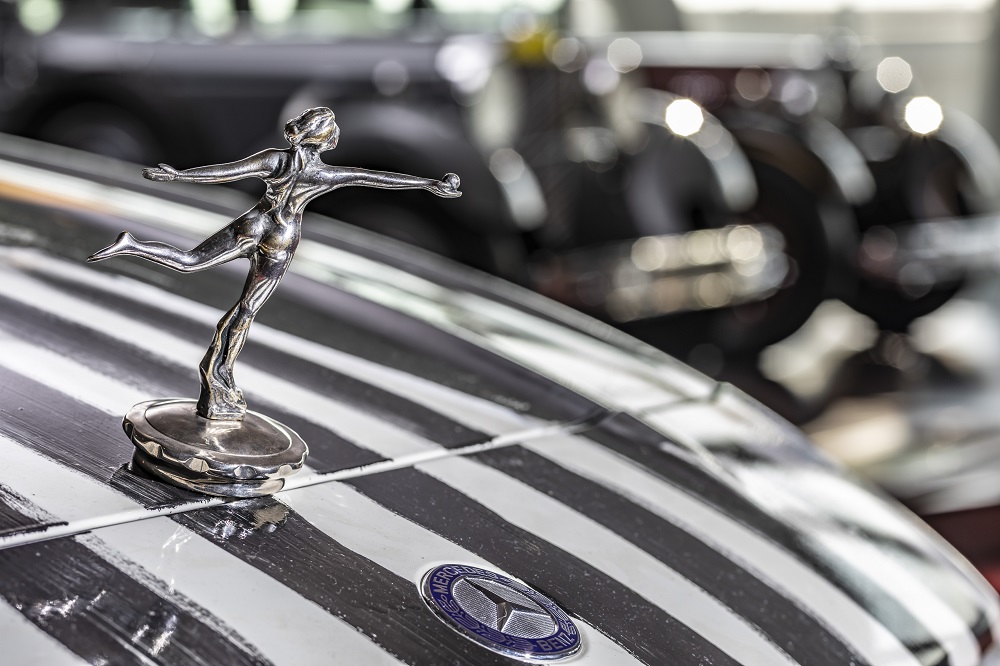
- The distinguishing mark of a brand and an ornament for a car
- Shining examples: The Mercedes star and the Maybach double‑M
- The star has been mounted on a universal joint since the early 1950s for pedestrian protection
- “33 Extras”: Exhibits of motoring culture at the Mercedes-Benz Museum
30/33: The radiator emblem
An eye-catcher: Positioned proudly for all to see as a brand emblem – or a small sculpture – at the very front of the vehicle – the figure atop the radiator. This emblem is both a distinguishing feature and an ornament.
Spotlight on: The first cars did not need a radiator emblem. That was only logical because, at that time, they did not have modern-style radiators with a closed water circuit. Those systems were introduced as engine power increased at the transition from the 19th to the 20th century. The outstanding protagonist of this development was the Mercedes 35 hp, which, in 1901, was the first car to sport an efficient honeycomb radiator. The radiator presented the face of the Mercedes and, from 1909, became the stage for the three-pointed Mercedes star, which initially adorned the radiator as a raised badge.
A powerful symbol: It was the sons of motoring pioneer Gottlieb Daimler, who died in 1900, who came up with the idea for the Mercedes star. The emblem with its three rays symbolised the vision of Gottlieb Daimler, who envisaged Daimler engines being used in land vehicles, in ships and in aviation. On 24 June 1909, Daimler-Motoren-Gesellschaft (DMG) applied for a design patent for the three-pointed star. It was entered into the trademark register on 9 February 1911.
Perfect positioning: An application for registration of the three-pointed star as a radiator emblem was filed on 5 November 1921 and it was registered as a trademark on 2 August 1923. At the same time, it decorated the cooling water screw cap, which upgraded the cap to a pedestal. In this way, the radiator mascot combined aesthetics with practical purpose. The star was even available with an integrated cooling water thermometer. Benz & Cie. did not yet use a radiator mascot but continued to apply badges and lettering on the upper radiator surround.
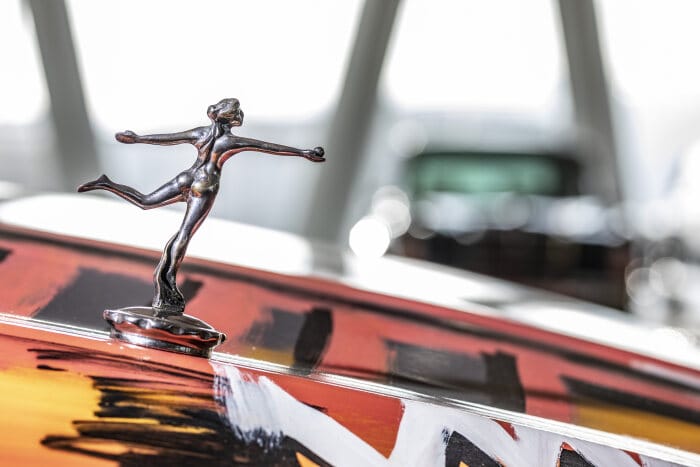
Prestige: Many car manufacturers used the radiator mascot as a prominent identifying emblem. When Maybach also launched its premium cars on the market in the 1920s, the company chose the double‑M for “Maybach-Motorenbau” as a trademark. It was used as a radiator emblem as well.
Creativity: At this time, the radiator was not hidden under the bonnet and was designed and decorated accordingly. In the 1920s, radiator fittings became works of art. From that time on, figures of cross-eyed fauns, unclothed ladies and animals made of silver took up this position. One such radiator mascot is the exhibit among the “33 Extras” at the Mercedes-Benz Museum: a lady is seen in a perfectly balanced, flowing posture holding a round object. It may be an apple or a ball – it is not easy to tell exactly what it is. The most unusual radiator figures were designed in the 1920s by the French artist René Jules Lalique – and they were made of glass.
Personal choice: In rare cases, customers had the Mercedes star replaced with their own emblems. The Mercedes-Benz 770 “Grand Mercedes” Cabriolet F (W 07), built in 1932 for the exiled Kaiser Wilhelm II, sported the Hohenzollern coat of arms on the radiator grille. That particular car can be seen in the Mercedes-Benz Museum in Collection Room 4: Gallery of Celebrities.
Change places: Aerodynamically enhanced bodies became increasingly popular after the Second World War. The front of the cars was designed accordingly – and the radiator as a functional item was moved to a position under the bonnet. The grille remained at the front to allow for the incoming cooling air. On Mercedes-Benz vehicles, this radiator grille still showed the same figure: the Mercedes star. In the 1990s, when the integrated radiator was introduced, the star moved from the chrome surround a little way to the rear onto the bonnet.
Freedom of movement: By this time, the star had long since been integrated into the brand’s safety philosophy. It was mounted on a universal joint to protect pedestrians in the event of a collision – and had been that way since the early 1950s. It was already a sought-after collector’s item and was often stolen. That made it the most frequently required Mercedes-Benz spare part.
Alternative: Customer tastes changed over the years. In the 204 model series C-Class, Mercedes-Benz offered a choice of two vehicle fronts for the first time – either with a large central star in the radiator grille or with the classic, free-standing star on the bonnet. In one respect, however, it did not change: it remained one of the best known trademarks in the world.
A different dimension: Anyone who wants to get a close-up look at a Mercedes star with a diameter of five metres is welcome to come to the Mercedes-Benz Museum. Until 2025, the Mercedes star from the Stuttgart railway station tower will be on show in front of the museum building. After that construction has been renovated and modernised, the two-tonne sign will be returned there and will, once again, rotate, illuminated at night, as a landmark above the city.
More interested in Mercedes-Benz? What about the 2005 Mika Hakkinen Mercedes-AMG DTM Car? Click here.


